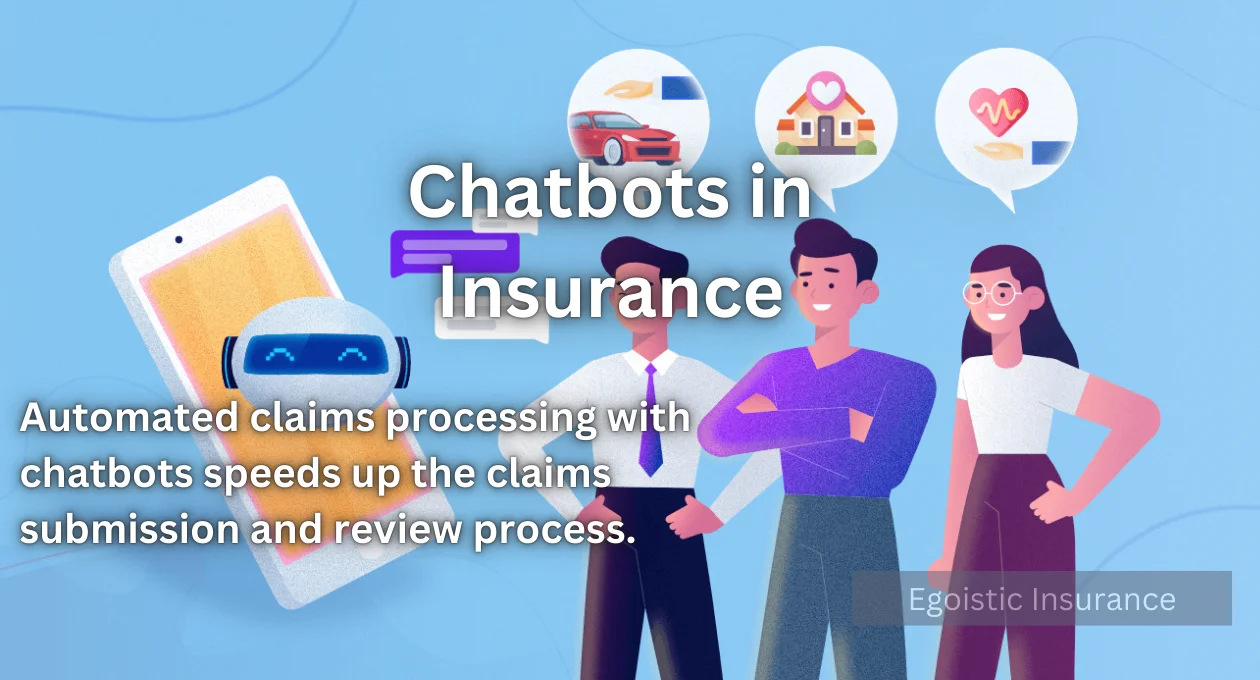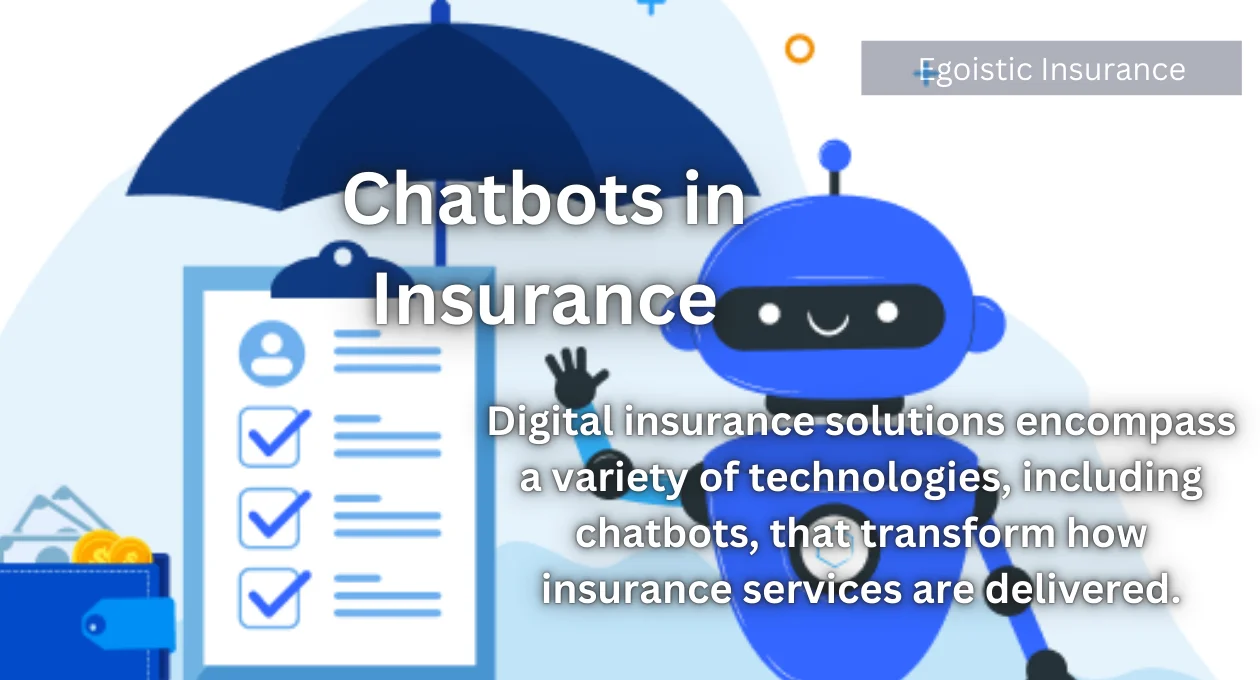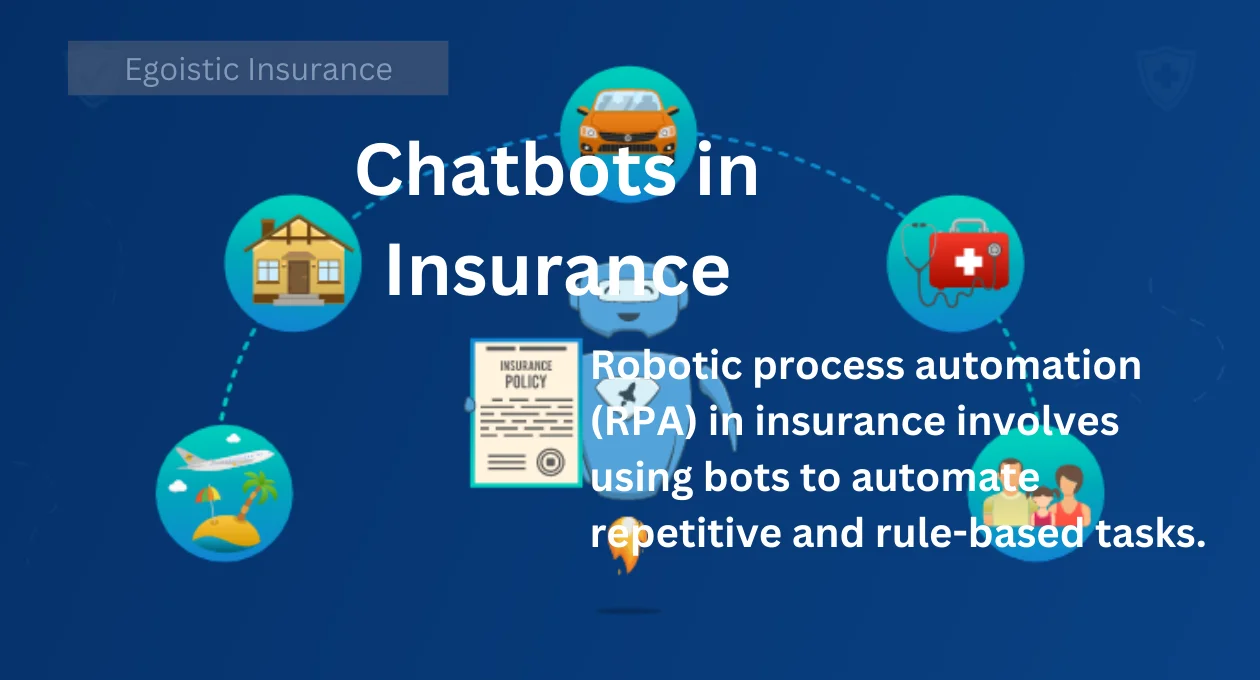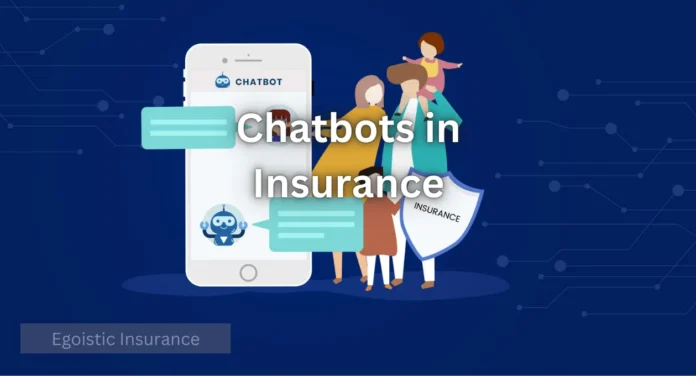The insurance industry, like many others, is undergoing a digital transformation. One of the key components of this change is the integration of chatbots, which leverage artificial intelligence (AI) to improve various aspects of insurance services. This blog explores the numerous ways chatbots are reshaping the insurance landscape, focusing on specific areas and technologies that are driving this evolution.
Chatbots are streamlining customer service in the insurance sector by offering instant responses to inquiries. This immediate engagement not only enhances customer satisfaction but also reduces the workload on human agents, allowing them to focus on more complex cases. With 24/7 availability, chatbots ensure that policyholders can access information and assistance whenever needed, eliminating the frustration of wait times.
Moreover, these AI-driven tools are capable of handling a multitude of tasks, such as guiding users through the claims process or providing quotes for various policies. By utilizing natural language processing, chatbots can effectively understand and respond to customer queries, creating a more intuitive and user-friendly experience. As technology advances, the potential for chatbots to further personalise interactions and predict customer needs will undoubtedly transform how insurance services are delivered.
AI Insurance Chatbots
AI insurance chatbots are designed to interact with customers using natural language, providing instant responses to inquiries and performing tasks traditionally handled by human agents. These chatbots use machine learning algorithms to understand and respond to customer needs efficiently, offering a personalized experience.
In addition to enhancing customer service, AI insurance chatbots play a critical role in data collection and analytics. By engaging with policyholders, these chatbots can gather valuable insights on customer behaviour and preferences. This data not only helps insurance companies refine their offerings but also enables them to identify trends and anticipate future needs. As a result, businesses can make informed decisions to improve their products and services, ultimately fostering better relationships with customers.
Furthermore, the integration of chatbots can lead to significant cost savings for insurance companies. By automating routine tasks, firms can reduce their reliance on large customer service teams, thus reallocating resources to more strategic areas. This shift not only increases operational efficiency but also allows companies to pass on savings to clients in the form of lower premiums. As the market continues to embrace digital solutions, the value of chatbots in driving innovation and competitiveness in the insurance sector will only grow.
Automated Claims Processing

Automated claims processing with chatbots speeds up the claims submission and review process. By guiding customers through claim forms and validating information in real-time, these chatbots reduce the time and effort required for both customers and insurance providers, leading to faster claim resolutions.
Additionally, the implementation of chatbots can enhance compliance and risk management within the insurance industry. By ensuring that all customer interactions adhere to regulatory standards, these AI tools can help mitigate potential legal issues. Moreover, chatbots can assist in identifying fraudulent claims through pattern recognition, alerting human agents to suspicious activities more efficiently. This dual role not only streamlines operations but also fortifies the integrity of the insurance process, ensuring that companies can better manage their risks while serving their clients effectively.
Insurance Customer Service Automation
Customer service automation in insurance involves using chatbots to handle routine inquiries and support tasks. From answering policy questions to providing quotes, these automated systems ensure customers receive timely and accurate information without the need for human intervention.
The use of chatbots in insurance is not only enhancing operational efficiency but also enriching the customer experience by providing timely support. As these AI tools become more sophisticated, they can adapt to individual customer preferences, thereby creating a more tailored interaction. This level of personalisation builds trust and loyalty, which are essential in an industry where relationships with clients matter greatly. Furthermore, as customers become more accustomed to these technologies, their expectations for service standards will inevitably rise, pushing the insurance sector to innovate continually.
Virtual Insurance Assistants
Virtual insurance assistants are advanced chatbots that provide a range of services, including policy management, claims tracking, and personalized recommendations. These assistants help customers navigate their insurance needs effortlessly, enhancing their overall experience.
The integration of virtual insurance assistants not only streamlines customer interactions but also empowers clients to take control of their insurance journey. By providing tailored recommendations based on individual needs and preferences, these assistants enhance decision-making for policyholders. Additionally, their ability to track claims in real-time keeps customers informed at every stage of the process. As trust develops through these proactive engagements, policyholders are more likely to feel confident in their insurance choices and remain loyal to their providers.
Chatbot Claims Management
Chatbot claims management systems are designed to handle the end-to-end claims process. From initial reporting to final settlement, these chatbots streamline workflows, reduce errors, and ensure a more efficient claims handling process.
The utilisation of AI in insurance not only improves efficiency but also fosters a deeper understanding of customer needs. By leveraging data analytics, insurers can tailor their products and services to meet specific client demands. This proactive approach is beneficial in cultivating long-term relationships, as clients appreciate personalised solutions that cater to their unique circumstances. Ultimately, the integration of smart technologies is reshaping the insurance landscape for both providers and policyholders alike.
Insurance Technology
The integration of chatbots into insurance is part of a broader trend towards advanced insurance technology. These technologies include AI, machine learning, and blockchain, which together create a more secure, efficient, and customer-friendly insurance ecosystem.
As the insurance industry evolves, staying ahead of technological advancements becomes crucial. Embracing innovations such as predictive analytics allows insurers to foresee market trends and customer needs, enabling proactive engagements. This foresight not only improves customer satisfaction but also positions companies to make strategic adjustments swiftly. By continually adapting to technological changes, insurers can enhance their competitive edge in a rapidly changing marketplace.
Customer Experience Improvement
Improving customer experience is a primary goal of deploying chatbots in insurance. By providing instant support, personalized interactions, and efficient service, chatbots enhance customer satisfaction and loyalty.
The continuous evolution of customer preferences and technological advancements is prompting the insurance industry to rethink its service delivery model. Insurers must not only incorporate chatbots but also ensure these systems are continuously updated to reflect changes in customer expectations and regulatory requirements. This adaptability will be crucial in retaining clients and attracting new ones. Ultimately, a commitment to enhancing both technology and service quality will define the future success of companies in the insurance sector.
Digital Insurance Solutions

Digital insurance solutions encompass a variety of technologies, including chatbots, that transform how insurance services are delivered. These solutions enable insurers to offer more flexible, accessible, and responsive products to their customers.
The deployment of digital insurance solutions not only optimizes internal processes but also significantly enhances customer interactions. By integrating user-friendly platforms, insurers can offer seamless access to services, enabling customers to manage their policies with ease. This shift towards a more digital experience resonates well with tech-savvy clients, who expect convenience and transparency in their dealings. As these solutions evolve, they will undoubtedly play a pivotal role in shaping the future of the insurance landscape.
Conversational AI in Insurance
Conversational AI in insurance refers to the use of natural language processing (NLP) and machine learning to create chatbots that can engage in meaningful conversations with customers. This technology allows for more natural and intuitive interactions, improving the user experience.
The implementation of conversational AI is revolutionising the way insurers communicate with their clients. By facilitating real-time conversations, these AI-driven systems can quickly address inquiries, provide information, and even guide users through complex processes with ease. As a result, customers experience reduced wait times and increased satisfaction, making them more likely to engage with their providers. This shift not only improves service quality but also strengthens the bond between insurers and policyholders.
Chatbot-Driven Policy Management
Chatbot-driven policy management simplifies the process of managing insurance policies. Customers can use chatbots to update their information, review coverage options, and renew policies, making policy management more convenient and efficient.
In addition to enhancing policy management, chatbots can also play a vital role in educating customers about insurance products. By providing clear and concise information regarding policies, coverage options, and claims processes, these digital assistants empower clients to make informed decisions. Furthermore, their availability 24/7 ensures that assistance is always at hand, catering to the diverse schedules of modern consumers. This proactive approach not only increases customer engagement but also builds trust, fostering a more knowledgeable insurance base.
Claims Handling Automation
Claims handling automation involves the use of chatbots to process and manage insurance claims. This automation reduces the need for manual intervention, speeds up the claims process, and ensures consistency and accuracy in claim settlements.
Integrating advanced analytics into claims handling goes beyond mere efficiency; it unlocks valuable insights that can preemptively identify potential fraud and errors. By analyzing historical data patterns, insurers can develop more accurate risk assessments, leading to improved decision-making. This predictive capability not only enhances operational performance but also safeguards financial interests. Ultimately, embracing data-driven strategies positions insurers to navigate future challenges with confidence and agility.
Insurance Chatbot Integration
Integrating chatbots into existing insurance systems is crucial for maximizing their benefits. This integration allows chatbots to access and utilize customer data, policy information, and other resources, providing more informed and accurate assistance.
The future of insurance heavily hinges on the effective integration of technology and customer-centric practices. As insurers further embrace digital solutions, they must focus on building robust, user-friendly interfaces that can cater to diverse customer needs. Training staff to better understand these technologies will also enhance service delivery and customer experiences. Ultimately, a seamless blend of human and technological resources will lead to increased efficiency and customer satisfaction in the insurance sector.
Insurance Agent Assistants
Insurance agent assistants are chatbots designed to support human agents in their daily tasks. These assistants can handle routine inquiries, manage appointments, and provide information, allowing agents to focus on more complex and high-value activities.
The integration of insurance agent assistants not only improves operational efficiency but also enhances the overall customer experience. By handling routine tasks, these chatbots free up agents to engage in more meaningful conversations with clients, ensuring that their unique needs are addressed. Furthermore, when agents have access to timely information and support from their assistants, they can make faster, more informed decisions, ultimately benefiting both the agency and the customer. As this technology continues to evolve, it will play a critical role in shaping the future dynamics of client-agent relationships in the insurance industry.
Robotic Process Automation (RPA)

Robotic process automation (RPA) in insurance involves using bots to automate repetitive and rule-based tasks. RPA, combined with chatbots, can significantly enhance operational efficiency by handling processes such as data entry, claims processing, and policy management.
The adoption of robotic process automation (RPA) is transforming the insurance industry by streamlining operations and reducing human error. By automating mundane tasks, insurers can focus their resources on more strategic initiatives, ultimately leading to improved service delivery. Moreover, RPA can easily integrate with existing systems, creating a cohesive workflow that enhances overall productivity. As the industry continues to evolve, embracing RPA will be crucial for insurers aiming to stay competitive in a rapidly changing market.
Insurance Industry Innovation
The adoption of chatbots represents a significant innovation in the insurance industry. By leveraging advanced technologies, insurers can offer more efficient, customer-centric services, positioning themselves competitively in a rapidly evolving market.
As the insurance industry embraces technological advancement, the potential for enhanced customer experiences grows exponentially. Innovations such as predictive analytics and machine learning enable insurers to personalise services, tailoring coverage options to individual client needs. By leveraging data insights, companies can proactively engage with customers, offering timely updates and recommendations. This shift towards a more personalised approach not only strengthens customer loyalty but also drives operational efficiencies across the sector.
Predictive Analytics in Insurance
Predictive analytics in insurance involves using data analysis to forecast future events and trends. Chatbots equipped with predictive analytics can provide insights into customer behavior, risk assessment, and fraud detection, enabling more informed decision-making.
The implementation of machine learning algorithms in insurance processes enhances decision-making capabilities by improving data analysis accuracy. These algorithms can identify patterns that humans may overlook, allowing for more precise risk assessments and customer profiling. By harnessing the power of machine learning, insurers can better predict customer needs, ultimately leading to satisfaction and retention. In this data-driven era, the ability to adapt to emerging trends will be essential for sustaining competitive advantage in the insurance market.
Insurance Chatbot Trends

Current trends in insurance chatbots include the use of advanced AI, integration with other digital platforms, and the development of more sophisticated conversational capabilities. These trends are driving the continuous improvement of chatbot performance and capabilities.
As the insurance landscape continues to evolve, embracing a culture of innovation becomes paramount. Insurers must remain vigilant in identifying technological trends, ensuring they adapt and integrate these advancements into their operations. This proactive approach not only enhances service delivery but also fosters greater customer trust and satisfaction. Ultimately, a forward-thinking mindset will empower insurers to thrive in an increasingly competitive market.
Natural Language Processing (NLP)
Natural language processing (NLP) is a critical component of conversational AI. In insurance, NLP enables chatbots to understand and respond to customer inquiries in a human-like manner, improving the quality and effectiveness of interactions.
The rise of artificial intelligence in the insurance sector is not just about automation; it also heralds a new era of personalisation and customer engagement. AI technologies empower insurers to analyse vast amounts of data quickly, uncovering patterns that inform product development and marketing strategies. As a result, companies can create tailored insurance solutions that better meet the specific needs of individuals and businesses, enhancing overall satisfaction. By prioritising customer-centric innovations, insurers can foster long-term relationships and establish themselves as trusted partners in risk management.
24/7 Customer Support for Insurance
One of the most significant advantages of chatbots is their ability to provide 24/7 customer support. Insurance chatbots are available around the clock to assist with inquiries, claims, and other services, ensuring that customers receive timely support whenever they need it.
In addition to round-the-clock support, insurance chatbots also play a crucial role in streamlining claims processes. By guiding customers through the necessary steps, they reduce the time and effort required for claim submissions. Furthermore, these chatbots can automatically collect relevant information, ensuring accuracy and enhancing the user experience. As a result, customers feel more empowered and informed throughout their claims journey, ultimately leading to higher satisfaction rates.
Insurance Fraud Detection with Chatbots
Insurance fraud detection with chatbots involves using AI to identify suspicious patterns and anomalies in claims data. By analyzing large volumes of data, chatbots can help detect and prevent fraudulent activities, protecting insurers and customers alike.
In conclusion, chatbots are transforming the insurance industry by automating processes, improving customer service, and enhancing operational efficiency. As technology continues to advance, the role of chatbots in insurance is expected to grow, bringing even more innovative solutions to the market.
As insurers continue to adopt innovative technologies, the collaboration between humans and AI will play a pivotal role in shaping the future of service delivery. By combining the expertise of industry professionals with the analytical power of AI, companies can better address complex customer needs and streamline operations. This synergy not only enhances the efficiency of processes but also fosters a culture of continuous improvement. Ultimately, insurers who embrace this collaborative approach will not only meet but exceed customer expectations, securing their place in a competitive landscape.
FAQs
What are insurance chatbots?
Insurance chatbots are AI-driven virtual assistants designed to assist customers with various insurance-related inquiries, such as policy information, claim submissions, and general customer service support, available 24/7.
How do chatbots improve customer service in insurance?
Chatbots enhance customer service by providing instant responses, guiding users through claims processes, and employing natural language processing to understand and address customer inquiries effectively and conversationally.
What role does predictive analytics play in insurance?
Predictive analytics helps insurers forecast trends and assess risks by analyzing customer data and behaviour patterns, allowing for more informed decision-making and personalised service offerings.
Can chatbots help with insurance fraud detection?
Yes, chatbots can assist in fraud detection by identifying unusual patterns and discrepancies in claims data through AI analysis, helping to protect both insurers and policyholders from fraudulent activities.
Will chatbots replace human agents in insurance?
While chatbots significantly enhance operational efficiency and streamline processes, they are unlikely to fully replace human agents. Instead, they serve as a complementary resource, allowing human agents to focus on more complex customer needs and relationship-building.
Conclusion
In conclusion, the integration of chatbots and AI-driven technologies is fundamentally reshaping the landscape of the insurance industry. By providing 24/7 customer support, streamlining claims processes, and enhancing fraud detection capabilities, these tools are not only improving operational efficiency but also significantly elevating the customer experience. As insurers continue to invest in innovation and adapt to emerging technologies, the collaboration between human expertise and intelligent automation will be crucial. Embracing this synergy will empower insurers to meet the evolving demands of their customers, foster trust, and establish a competitive edge in a rapidly changing market. Ultimately, the future of insurance lies in leveraging technology to deliver personalised, responsive, and reliable service that resonates with customers.
As the insurance industry evolves, it is essential for companies to stay ahead of the curve by adopting emerging technologies and innovative practices. Integrating tools like AI-driven chatbots not only streamlines internal processes but also enriches the customer experience. Insurers should focus on continuous training and development for their teams to leverage these technologies effectively. By prioritising adaptation and responsiveness, the insurance sector can maintain its relevance and ensure long-lasting relationships with its policyholders.
For more interesting information keep visiting egoisticinsurance.online


